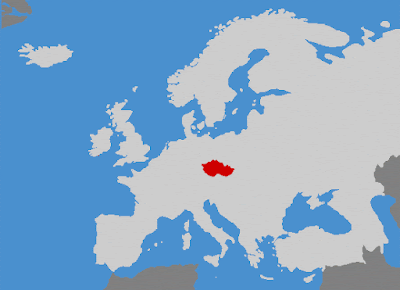(from my colleague Dr. Win Thin)
The Czech National Bank (CNB) ended the EUR/CZK floor today. Timing was a little earlier than expected, but rising inflation and a robust economy warranted it. We think it’s too soon to talk about a rate hike, as we expect the koruna to overshoot to the strong side.
POLICY OUTLOOK
Price pressures are rising, with CPI accelerating to 2.5% y/y in February. March data will be reported April 10, with consensus at 2.6% y/y. If so, this would be the highest rate since November 2012 and is creeping closer to the top of the 1-3% target range. Given low base effects from 2016, we see risks that inflation moves above the target range this year. Core CPI and PPI measures are also accelerating.
The worsening inflation outlook supported the case for an exit from the koruna cap. While officials warned that rate hikes are now on the table, we see no move near-term. Upcoming central bank policy meetings are May 4 and June 29. We see very little risk of a rate hike at either one, despite Governor Rusnok’s warning today that a May hike can’t be rule out.
Looking ahead, a rate hike is possible in H2, but a lot will depend on how strong the koruna gets. For a small open economy, a stronger currency can dramatically tighten monetary conditions. If EUR/CZK continues to drop, then rate hikes on top of that would simply be too aggressive. On the other hand, if EUR/CZK rebounds and moves higher, then the central bank would have more leeway to hike interest rates.
Whatever the rate path is, we expect it will be very cautious. Just as the Fed is concerned about the potential impact of exiting unconventional policies (shrinking the balance sheet), so too will the CNB be cautious after exiting the EUR/CZK floor.
Foreign reserves have exploded due to the FX intervention needed to maintain the EUR/CZK floor near 27. They rose to $111.7 bln (EUR105.4 bln) in February, up from $47.5 bln (EUR34.8 bln) in October 2013 (the floor was put into place in November 2013). We expect the central bank to intervene as needed in the coming months. March reserves will be reported tomorrow, but the more important reading will be April so that markets can gauge whether the CNB will still intervene aggressively after the cap ended.
INVESTMENT OUTLOOK
EUR/CZK has not really traded with the rest of EM ever since the CNB instituted the floor “near” 27 back in November 2013. The pair had pretty much traded around 27 since mid-2015, but it did spike from time to time in response to external factors (Brexit, US elections). So far today, EUR/CZK has moved 1.6% to levels not seen since November 2013. The end of the floor has been so well-telegraphed (unlike SNB's CHF move) that a truly outsized move today was avoided.
EUR/CZK was trading near 25.75 right before the floor was established, and so logic would dictate a return to that area. Indeed, our initial target is currently the October low just below that near 25.48. After that, the next big level is the September 2012 low near 24.28.
Given how prone FX markets are to overshoot, we see scope for a 10-15% drop. This would put the pair back at the February 2011 low near 23.93. Of course, there is risk of an even bigger overshoot on the order of 15-20% that could put the pair back at the July 2008 low near 22.88.
Czech policymakers repeated today its warnings of excessive moves in both directions when the floor is removed. We still suspect the central bank will intervene as needed to help limit really excessive moves. However, we do not think it will ever resort to negative rates. Indeed, the removal of the floor is the first step to normalizing monetary policy. The next step to normalizing would be to raise interest rates, not to cut them into negative territory.
Czech equities have continued to underperform after a poor 2016. In 2016, MSCI Czech was -7% vs. +7% for MSCI EM. So far this year, MSCI Czech is up 4.6% YTD and compares to up 12.3% YTD for MSCI EM. This underperformance will likely continue if the koruna strengthens further, as exporters will come under pressure. However, this underperformance should eventually ebb, as our EM Equity model has Czech Republic at a VERY OVERWEIGHT position due in large part to a robust economy.
Czech bonds have underperformed. The yield on 10-year local currency government bonds is +48 bp YTD and is the worst performer in EM. It’s followed by Romania (+34 bp), China (+29 bp) and India (+25 bp). With inflation likely to continue rising and the central bank likely to normalize policy further, we think Czech bonds will continue underperforming.
Our own sovereign ratings model shows the Czech Republic’s implied rating at AA-/Aa3/AA-. S&P is right on target with its AA- rating, but we see upgrade potential for the A1 and A+ ratings from Moody’s and Fitch, respectively.
Picking up the Czech
 Reviewed by Marc Chandler
on
April 06, 2017
Rating:
Reviewed by Marc Chandler
on
April 06, 2017
Rating:
 Reviewed by Marc Chandler
on
April 06, 2017
Rating:
Reviewed by Marc Chandler
on
April 06, 2017
Rating:






